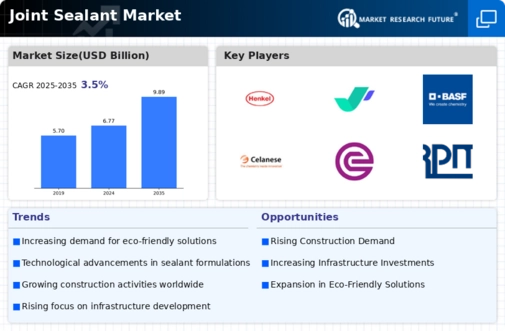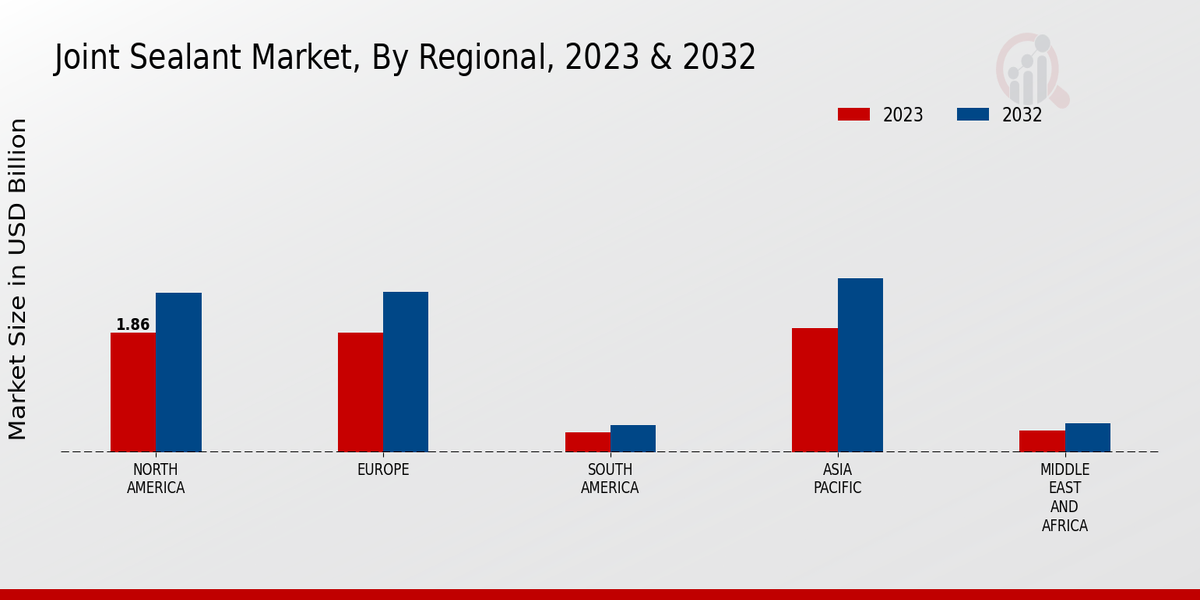Joint Sealant Market Summary
The global joint sealant market is projected to grow from 6.77 USD billion in 2024 to 9.89 USD billion by 2035.
Key Market Trends & Highlights
Joint Sealant Key Trends and Highlights
- The market is expected to experience a compound annual growth rate (CAGR) of 3.51 percent from 2025 to 2035.
- By 2035, the market valuation is anticipated to reach 9.89 USD billion, indicating robust growth potential.
- In 2024, the market is valued at 6.77 USD billion, reflecting a solid foundation for future expansion.
- Growing adoption of advanced sealing technologies due to increasing construction activities is a major market driver.
Market Size & Forecast
| 2024 Market Size | 6.77 (USD Billion) |
| 2035 Market Size | 9.89 (USD Billion) |
| CAGR (2025-2035) | 3.51% |
Major Players
Dow, Henkel, Sika, BASF, Celanese, Evonik, Arkema, 3M, RPM International, Wacker Chemie, Bostik, Huntsman, PPG Industries, SaintGobain













